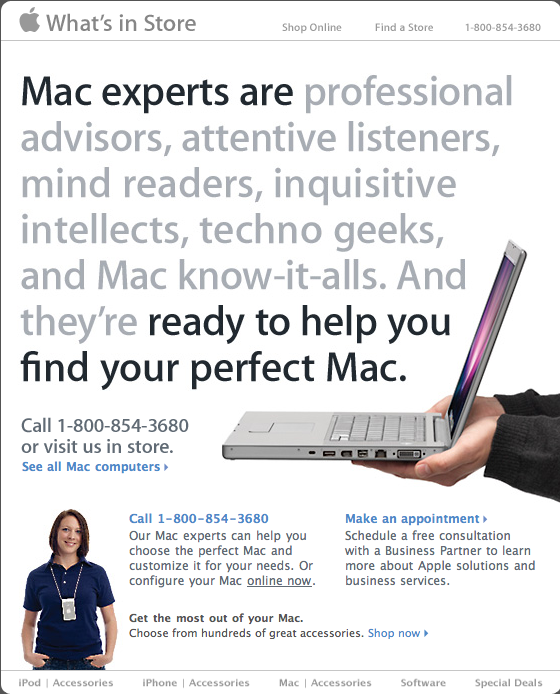Last Friday, I sent out this tweet about ExpenseASteak.com:
CFOs face flood of flawless faux receipts http://pic.gd/7ab1a9; ExpenseASteak.com vies for guerrilla site of 2009 http://bit.ly/IsLY3
Today’s AdAge article on ExpenseASteak.com by Bob Garfield reminded me of both the brilliance and limitations of Twitter. While Tweets are timely treats, they simply can’t deliver the whole meal. My tweet tried to call attention to both the ethical issues and the sublime cleverness of Expense A Steak.com and did neither very well. And since I don’t have a lot of time at the moment, I’m going to borrow a few of the highlights from Garfield’s review.
Just in case you haven’t visited the site for yourself, here’s how Garfield described it:
Go to expenseasteak.com and fill in the obscenely large amount of your Maloney & Porcelli meal. Out will come a PDF of receipts for exactly that amount — innocuous (and extremely realistic) proof of purchases for taxis, panini lunches, office supplies, business books and so on. Accounting doesn’t ask why you’ve bought $700 worth of anti-static floor mats and toner? That’s their problem
And here’s Garfield’s appraisal of the stunt:
We LOVE this thing. It is brilliant. It is charming. It is hilarious. In short, it is brothermucking genius.
And here’s Garfield’s acknowledgment of the potential ethical dilemma of putting highly realistic looking phony expense reports into the hands of meat lovers and vegetarians alike:
All right, granted, the 61,000 phony receipts downloaded over the first four days might suggest the stunt is actually being slightly “abused” for a touch of “fraud” by a few tens of thousands of bad-apple “thieves.” But, c’mon. Expense-a-Steak apps don’t defraud corporations. People defraud corporations. In the meantime, Maloney & Porcelli is suddenly on the lips of those who hitherto could remember only Smith & Wollensky, preempting its major competitor into a corner. Because how to top expenseasteak.com?
From my perspective, ExpenseASteak.com is a rather clever and potentially degenerate example of Marketing as Service. It is unquestionably relevant both to the economic times and the restaurant brand it supports. It is remarkably entertaining–be sure to print out your own receipt and read some of the clever details baked into them. It also delivers the basic service of creating fake expense reports which is humorous until people actually turn them in at which time it becomes a nightmare for CFOs–proving once again that “everything is funny until it happens to you.”
Which begs the question: will companies send Maloney & Porcelli the bill when false expense reports are actually filed using their cute little app? Or will consumers sue Maloney & Porcelli when they lose their jobs after submitting false expense reports? Hopefully none of this will happen but stunts like this can go bad–just ask Toyota who is getting sued because of a Matrix prank campaign that according to AdAge terrified one consumer. Evidently, she missed the joke. Just in case someone misses the expense joke, I hope that Walrus, the NYC-based agency that created the site, carries as much liability insurance as we do!


